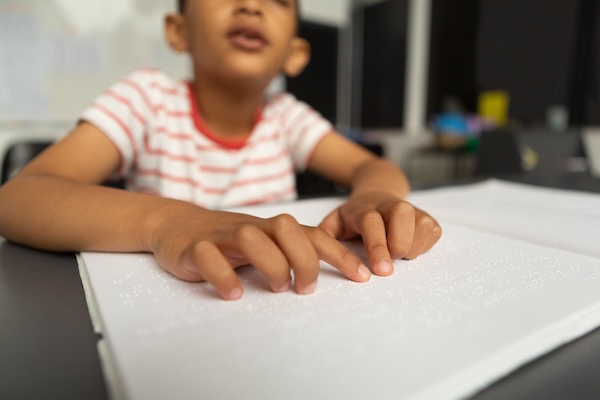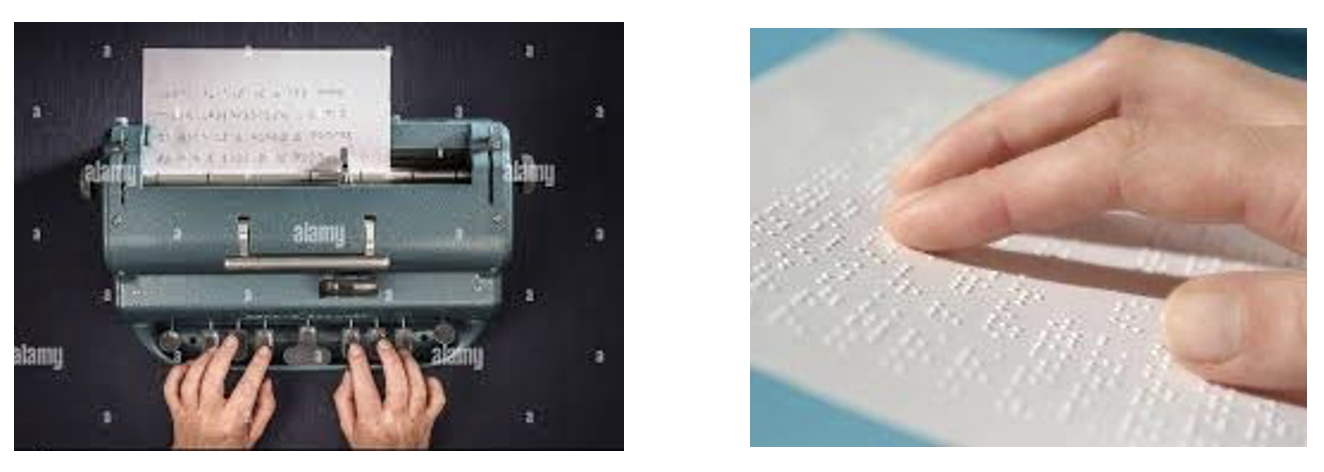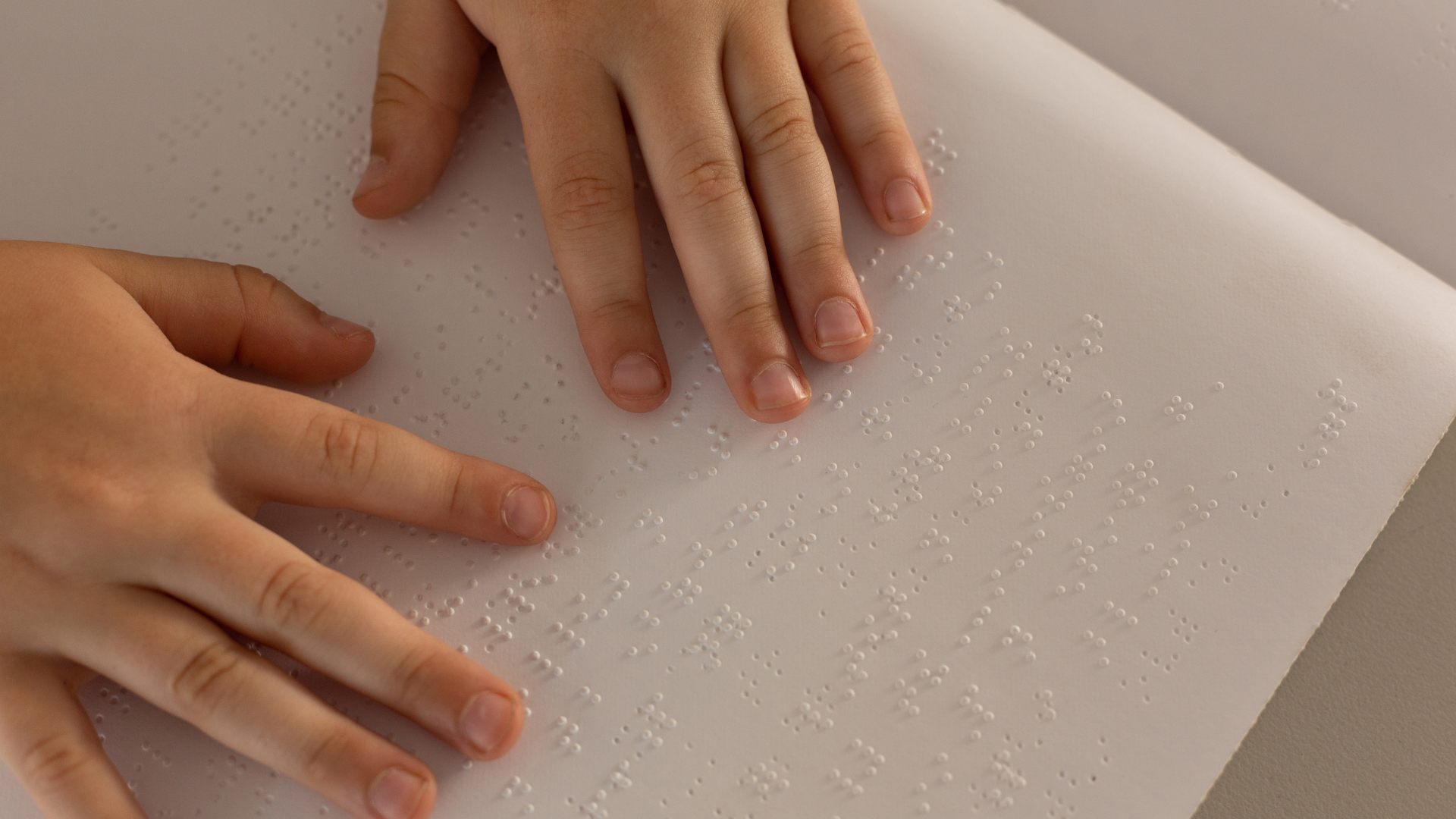Many researchers have conducted research about early literacy development among normal children but there is a dearth of literacy among visually impaired children especially in Malaysia.
Research shows that sighted children and visually impaired children share the same developmental pattern. However, for children who are visually impaired, the understanding of the concept of written language may be delayed because these children cannot learn visually the concepts of written language such as scribbling or pretend writing.

Family support and school environment are two very important factors that help to develop the process of reading and writing among visually impaired children. Children spend most of their time in school and at home with parents.
Parents are the children’s first teachers and they are the children’s teachers for the longest periods. Therefore, they play a very important role in the literacy development of their visually impaired children and this will be the determining factor in helping these children become literate individuals.
What about parents of the visually impaired children in Malaysia? Do parents of these visually impaired children give full support in helping their child or children to successfully progress in their reading or writing skills?
For normal children, they can independently get engaged in written language and observe others using written language and this will facilitate the child’s progress in reading and writing. A question arises here: How are visually impaired children going to explore written language by themselves and how are they going to observe others using written language? Thus, adult-child interaction which involves literacy is crucial for a visually impaired child to progress in reading and writing.
In this article, a few home literacy practices that are beneficial for visually impaired children will be shared so that parents of these children can use some of these practices at home to help their visually impaired children to develop reading and writing.
Learning Letters Using the ABC Smart Learning Board
How can we make learning the letters of the alphabet more fun among visually impaired children? One of the most innovative ways is to change the normal ABC Smart Board into a braille ABC Smart Board by sticking the braille letters on the normal letters of the alphabet.

What is this ABC Smart Learning Board? This is a normal smart board with letters of alphabet on it and numbers from 1 to 10. It is battery operated. When we press the letter “Aa”, the smart board will sound, “Aa” is for apple. “A-p-p-l-e” > “Apple”. “Bb” is for bell. “B-e-l-l” > “Bell”. When we stick the braille letters on top on these normal letters, the visually impaired child can feel the letters and also learn the spelling of words. Parents of these children can start by sticking the small letters of the alphabets and then change them to capital letters. In this way, the visually impaired child will be able to differentiate the letters and with spelling, they will learn in a more fun way.
During the observation, the researcher found that this smart board is like a magical board that can be used for visually impaired children and the children enjoyed themselves pressing and listening to the sounds and the spellings. One of the visually impaired children also asked when he pressed the letter “K” and the board read it as “Kk” is for king, what is a king and his mother answered that “A king is a ruler of a country”. The child curiously asked his mother again, “What does a ruler of a country do?”. These shows that visually impaired children are attentive and eager to ask questions.
On another occasion, when the visually impaired child pressed the letter “Ss”, the board spelt it as “Ss” is for ship, “S-h-i-p” > “Ship” and the board sounded “toot-toot”. The child asked his mother, why this “ship” does not sound “bek-bek” but sounds “toot-toot” instead? Then the mother answered: “Oh! This ship is spelt s-h-i-p is something like a bigger boat. The ‘bek-bek’ is spelt as s-h-e-e-p, a kind of a goat and it is called kambing biri-biri in Malay language” The child continued asking his mother, this s-h-i-p got no fur right? Besides clarifying the meaning of words, the child also used the spelling literacy event to clarify the pronunciation and meaning of minimal pairs (/ship/ and /sheep/).
In other words, this magic smart board can be used by parents of visually impaired children at home and also by kindergarten teachers in school to promote spelling and learning the letters of the alphabets. In addition, parents can choose to buy this board with the English spelling or the Malay spelling.
Learning How to Use the Braille Machine
The most important exposure for a blind child is learning braille and learning how to use the braille machine. Some parents of visually impaired children in Malaysia do not even know the existence of braille and that visually impaired children learn reading and writing using the braille machine. This is an alarming problem.
If parents themselves do not know how to help their visually impaired children, how are these children going to learn how to read and write at a younger age compared to their sighted peers?
Learning how to put the paper into the braille machine is a significant literacy event because there is only one side of the paper that can be used to type, that is the side with a smooth surface. If we use the other side of the paper, we can still type but after a short period of time, the braille dots cannot be felt anymore.
Teaching the visually impaired child to feel the different surfaces of the braille and the correct side for typing is crucial in helping the visually impaired children learn to read and write. On top of that, the child also needs to be taught the correct fingering method of the braille machine so that the process of typing on the braille machine will be faster.

Storybook Reading
According to research, storybook reading improves children’s knowledge of word meanings and their general language comprehension. Children who are read to, develop background knowledge about different topics and build large vocabulary which will later help in their reading comprehension. Therefore, parents of visually impaired children are encouraged to read aloud to their children.

Conclusion
There is no other way for a visually impaired individual to learn reading and writing except through braille. Even though with the intervention of modern devices such as talking calculators and computers for exposing blind individuals to literacy, the basic fact is that visually impaired people cannot express themselves through writing if they do not learn braille. Since parents are the children’s first teachers, they are responsible in introducing braille to their children. Parents can seek help from certain organizations or the government if they do not know how to go about with their visually impaired children.















